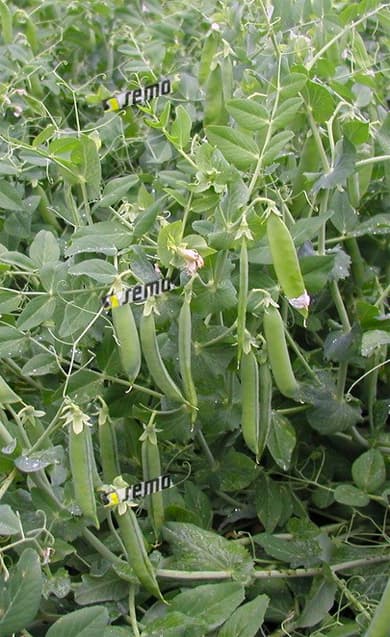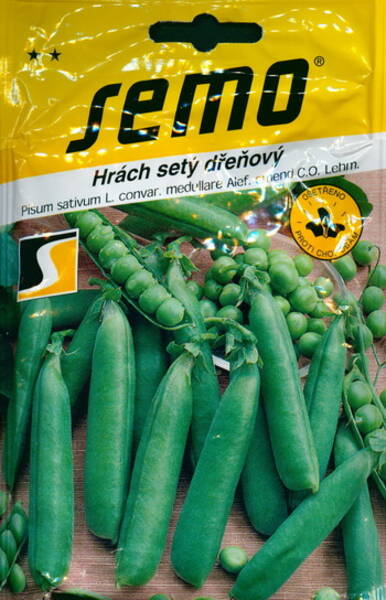Ex Tax: 1.25€
Late-ripening pea variety 60-80 cm high with a growing season of 87 days from sowing to harvest.
The pods are obtuse, 8 cm long, containing 6-8 large grains of dark green colour.
Variety value: consistently high yield.
1.0 g = 3-6 seeds.

Green peas.
* Peas have their own agricultural practices for growing.
The first one is seed testing. Due to the fact that legume seeds are susceptible to pest attacks and are often sold damaged, they must be soaked before sowing. This simple trick not only allows you to identify non-viable peas but also prevents the reproduction of unwanted "aliens" in your beds, besides, it simply stimulates the germination of seed material ...
At the same time, you should not wait for the roots to appear, since only hatched (i.e. healthy seeds) should be planted in the ground, without obvious signs of the presence of pests under the skin.
Second: despite the fact that peas are not afraid of cold weather, and gardeners sow some peeling varieties even in frozen ground, it is still recommended to sow sugar varieties in the soil later - with the onset of stable warm weather, (in late April - early May, depending from the climate zone). But with such sowing, one should not wait for high temperatures, since pea seedlings do not tolerate heat and are then upset with their fair loss.
Third: a well-lit area is selected for landing. Sowing is carried out according to the principle of a two-line tape, with a distance between the tapes of about 50 cm, and between the lines - about 40 cm (for sugar varieties) and about 20 cm (for shelling). At the same time, the seeds in the row are preferably quite dense (about 4 cm), since peas are one of the few plants that benefit from thickening, thus providing greater plant stability and shading of the root system, which protects against overheating.
The planting depth of pea seeds is 3 cm on heavy soils and up to 5 cm on light soils.
In order to extend the harvest time of peas, you must:
* sow in 10-day increments (until the end of May)
* select varieties with different ripening periods
* in hot weather, ensure timely watering and high-quality mulching, since elevated temperatures, combined with a lack of moisture, greatly deplete plants, which leads to a decrease in the size of the pods and the quality of the crop as a whole.
Watering: peas need moisture most during the flowering period, so at this time it is watered at least 2 times a week (or even more often), focusing on the weather. Before flowering, watering can be rare, but plentiful - once every 7 days. After watering and heavy rains, the aisles must be loosened to enrich the soil with oxygen.
And, of course, do not forget about top dressing - here the mullein can be the best choice.
Thoughtful plant support also plays an important role in increasing production yield, which can be carried out through dense plantings or with the help of neighbouring companion crops, as well as in the form of special supports (lattice or just rods), which will greatly help peas to ensure natural growth rates, affecting, of course, and on productivity.
Another rule: in order for your peas not to “slow down” when forming pods, you need to harvest on time. This can be done either with scissors or by gently pinching off the pods with your nails, given the most important fact that the collection must be done without waiting for the pods to fully ripen!












